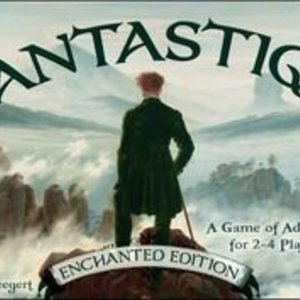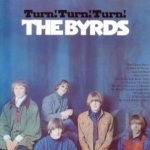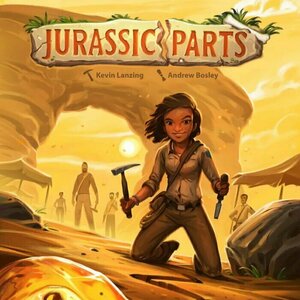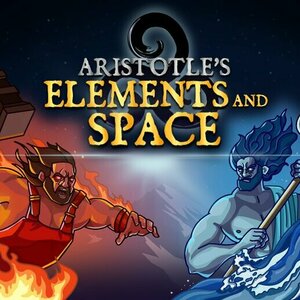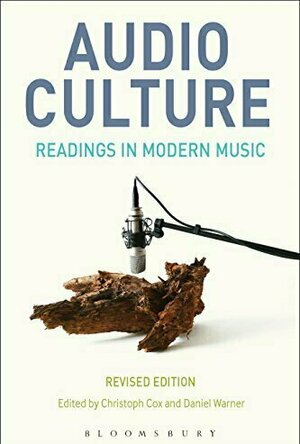
Audio Culture: Readings In Modern Music
Book
The groundbreaking Audio Culture: Readings in Modern Music (Continuum; September 2004; paperback...
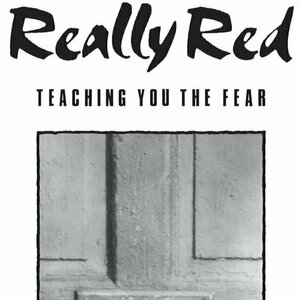
Teaching You The Fear by Really Red
Album
All the hits in one place, plus a booklet featuring extensive liner notes, photos and lyrics....
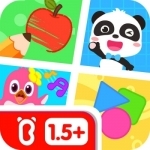
Baby Panda Games For Kids
Education and Games
App
For more videos, subscribe to BabyBus on YouTube! ►►https://goo.gl/llI2fX Big news: Here comes...
Purple Phoenix Games (2266 KP) rated Fantastiqa in Tabletop Games
Jul 30, 2021
Fantastiqa is a fantasy rock-paper-scissors style deck building adventure game. Now each of those mechanics individually can make for a wonderful children’s game. Looking upon the art in Fantastiqa will also nudge players towards that of a children’s game. Alas, Fantastiqa is not a children’s game and players will be scratching their heads for multiple reasons whilst playing it.
To setup, follow the instructions of the rulebook. There are just too many to list and explain here. Once setup, the game should look something like the photo above. Each player will have their draw decks identical to those of their opponents, and the play area is essentially a map of six locations with a statue at each location and decks of cards from which players will be drawing on their turns.
A typical turn will allow players to complete one of three different actions: Go Adventuring (where players will be using cards from their decks to subdue and recruit creatures between locations), Visit a Statue (where players can draw cards from the different decks for Beast, Artifact, and Quest cards to add to their discard piles, or pay gems to exile cards from their hands out of the game, or even pay gems to teleport to the matching statue on the other side of the board), or Complete a Quest (by discarding their appropriate cards that fulfill the quest requirements).
Turns can be very quick, or long and drawn out as players carefully choose which tactics to apply to the board on the table, while weighing the need for more powerful cards in their decks, and keeping up with the Joneses as they compete for VP on Quest cards. This is a deck builder, after all, so improving one’s deck is always the first consideration, but should a player oust those dang tea-drinking lazy dragon cards, or attempt to commit cards to a quest? The choices are quite numerous as play continues, and players realize that, again, this is no child’s game. Play continues in this fashion of players taking turns completing actions and quests until one player gains enough VP through completed quests to win the game.
Components. Every component in Fantastiqa is Fantastiq! I feel like the entire game is linen-finished, save for the little plastic gems and large statueeples. This game feels quite deluxe, and that will always be a big stamp of approval from me. One thing that can jar some players is the choice of art used between the player placards, card art, token art, and other components. They certainly don’t match at all, but I believe this tracks with the quirky nature of the theme and game overall, so I quite enjoy it. I can indeed understand why some would be opposed, but that is not how I feel at all.
I kinda bled into my final thoughts there, but I do love Fantastiqa. The theme is super weird: players answer a Help Wanted ad and long story short they meet a crazy old man who gives them a rucksack full of ordinary items: toothbrush, helmet, bat, and a dog. The dog runs away across the street and players find themselves in another world where these ordinary items are now transformed into magic wands, rams (the animals), clubs, and a dog, among other items. Players I have played with cannot accept that a spatula is a sword in the game and that just breaks immersion for them. I quite like it and the game’s wacky theme.
But the gameplay itself is also quite engaging. Traveling all over this new world subduing (and subsequently recruiting to your cause) Knights with spatulae and Giant Spiders with cat’s teeth is interesting and a fresh way to incorporate a theme into a deck builder as opposed to simply generating purchasing power and buying the cards that are wanted. The statue interactions are great ways to build up your deck as well, and keeping an eye on what quests others are gunning for as well as their personal hidden quests adds a bit of race-game feeling that some other deck builders lack. I can’t say enough great things about Fantastiqa, but completely understand how the theme may break the game for others’ enjoyment. That said, Purple Phoenix Games give this one a well-traveled 10 / 12. It’s weird, I’ll give you that, but it’s a good kind of weird. Check it out.

Nelly Cootalot: The Fowl Fleet
Games, Entertainment and Stickers
App
Best of Mac App Store 2016 game now on iOS! "The funniest mobile game of 2017 if not all time." -...
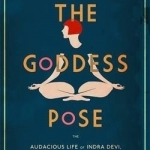
The Goddess Pose: The Audacious Life of Indra Devi, the Woman Who Helped Bring Yoga to the West
Book
When the woman who would become Indra Devi was born in Russia in 1899, yoga was virtually unknown...
David Byrne recommended track Mr. Tambourine Man by The Byrds in There Is a Season by The Byrds in Music (curated)

Pic Blender Art Photo Editor
Photo & Video and Entertainment
App
Pic BlendEr app is the superior way to create double exposure and graphic design images in seconds. ...
Purple Phoenix Games (2266 KP) rated Jurassic Parts in Tabletop Games
May 31, 2021
Jurassic Parts is an interesting mix and spins of area control, enclosure, and set collection for two to five players. In it, players are all paleontologists bent on claiming the biggest and best bones from a giant slab of rock containing dozens of dino species. The catch? Each paleontologist is trying to claim the bones for themselves. Sharp wit, good luck, and a bevvy of sharpened chisels spells success and fame for the paleontologist who wins at collecting Jurassic Parts.
DISCLAIMER: We were provided a copy of this game for the purposes of this review. This is a retail copy of the game, so what you see in these photos is exactly what would be received in your box. I do not intend to cover every single rule included in the rulebook, but will describe the overall game flow and major rule set so that our readers may get a sense of how the game plays. For more in depth rules, you may purchase a copy online or from your FLGS. -T
To setup, set aside one of the Pile of Bones (a wild card, of which there are several in the game) and shuffle the rest of the tiles. Split them into two stacks, flip one stack face-down, and build a slab around the Pile of Bones set aside earlier. This creates the slab of rock the players will be splitting. Each player receives their choice of paleontologist character sheet, chisels in their chosen color, and any pre-start resources per the rulebook. The slab is now ready for splitting!
On a turn, the active player will have several options. Firstly, however, the player must sharpen three chisels by moving them from the Dull Chisels are on the right of their sheet to the Sharp Chisels area on the left. Now the player may place their chisels anywhere on the slab, as long as it is on the gap between two tiles. The purpose of this is to create a wonky line of chisels that will break off sections of the slab from the larger chunk. Players will need to beware of rock piles on either side of their preferred placement, as each rock icon on either side of the placement will require an extra chisel to be dulled and discarded. If a chisel placement would cause a line to be completed, a hunk of the slab is separated from the master slab. Players consult with the line of chisels (as shown below) to determine which player has contributed more to the split than the others. This will rank out all contributing players. The player with the most chisels contributed will be able to claim their choice of HALF of the tiles split off, rounded UP (so a player would receive five tiles from a nine-tile split). The next player in contribution order will then have their choice of HALF of the remaining tiles, rounded UP (so the second player would receive two tiles from the previous example, as there would be four left). Subsequent players would then receive HALF of what is left until all tiles have been claimed, or there remains just one tile. This final tile is then given to the Field Leader for his collection.
In addition to this splitting and claiming on a turn, the active player may also make transactions with the Field Leader at any point during their turn. Actions that can be taken while transacting with the Field Leader are selling one tile to him in exchange for an Amber piece, spending Amber to: ignore rocks on the subsequent two chisel placements, sharpen two additional chisels this turn, take any of the leftover fossil tiles from the Field Leader, or take any fossil tile from the slab (as long as it doesn’t create a split). The first action from the Field Leader will cost the player one Amber. Should they wish to enact another action, its cost is two Amber. Subsequent actions on the same turn cost three Amber each.
As you will notice, fossil tiles from the slab will show plant fossils, Pile of Bones (wild), or actual bones belonging to specific dinosaurs. These specific bones will show an alphabetic letter pair icon to denote to which dinosaur it belongs. If, at the end of the game, players are able to assemble the correct type of fossil tiles belonging to specific dinosaurs, they will score many more points than if the dino skeleton were incomplete. For example, at the end of the game, each fossil tile is worth 1VP if from an incomplete skeleton. However, should a player have completed a Velociraptor skeleton, they will receive 4VP for those two tiles. A completed Triceratops scores 7VP, a T-Rex scores 10VP, a Brachiosaurus scores 15VP, and a tiny Pterodactyl scores 1VP for a complete skeleton because it spans only one tile. The Pile of Bones tiles in the game can be used in place of any other fossil tile to complete a skeleton, and Plant tiles score increasingly more points for a larger collection of them.
Play continues in this fashion of sharpening and placing chisels, breaking off sections of the slab and claiming fossil tiles, and utilizing actions at the Field Leader until all slab tiles have been assigned. The player with the most points from complete and incomplete skeletons and plants will be crowned the winner and the greatest paleontologist in the land… until the next playthrough.
Components. You know how you come to expect certain things from publishers, and can just imagine the quality of the game you are about to receive before seeing it? Such is the case with 25th Century Games. I KNOW that I will be receiving a quality product every time, and this certainly is no exception. The fossil tiles are great and sturdy. The chisels are neatly-designed and multifaceted (which I appreciate, as it would be easy to include tubular chisels and have them rolling around the table everywhere). The amber bits are the typical gemstones you find in Century: Golem Edition, but are the absolute PERFECT color and usage for this game. And did you see that first player marker? It’s a mosquito inside a polished amber stone. I mean, COME ON! How perfect is that? I’m excited just TALKING about the components. I haven’t even touched on art yet, and this is longer than most of my components paragraphs. The art is fabulous. It fits the game and the theme so perfectly – I could not have chosen a better fit myself. Has 25th Century Games set the bar too high for themselves, or will they continue to offer high quality games from here on out? I cannot wait to find out!
So sure, it looks great, but what about the gameplay? Do the art and components merely shield a mediocre game? No. Not at all. Being able to place chisels anywhere you like on the board offers players a freedom that is refreshing, but weighing that against the pressure to contribute to an existing or emerging line of chisels so that you are included in the split is just wonderful. Contemplating turns to sell off fossil tiles in order to earn enough amber to gain more chisels, or bypass rocks, or simply take the perfect tile for your collection offers just enough tacticization (why isn’t that a word…) to warm up the brain without indulging the AP in some players.
This is not at all a heavy game, and it certainly doesn’t need to be. It is just a fun time with friends and family that utilizes interesting twists of mechanics that I enjoy. It feels reminiscent of several games (hints of Through the Desert and a twist on I Split You Choose), but it entirely its own design. Purple Phoenix Games gives this one very rewarding 10 / 12. I generally enjoy most dinosaur-themed games, I understand, but this one sits among the best I have played. If you are looking for something that feels both familiar and fresh, with incredible art and components, you need to grab a copy of Jurassic Parts. There are just so many interesting choices to be made and strategies to attempt. I think I will setup a game right now. Want to come play?
Purple Phoenix Games (2266 KP) rated Aristotle's Elements and Space in Tabletop Games
Nov 5, 2020
Aristotle’s Elements and Space is a party style card game for three to five players. Players will be attempting to play elements to triumph over their opponents by using tried and true rock-paper-scissors style play.
DISCLAIMER: We were provided a prototype copy of this game for the purposes of this review. These are preview copy components, and I do not know for sure if the final components will be any different from these shown. Also, it is not my intention to detail every rule in the game, as there are just too many. You are invited to download the rulebook, back the game through the Kickstarter campaign, or through any retailers stocking it after fulfillment. -T
To setup stock the token bag (not pictured) with tokens according to the rulebook suggestions for number of players. Each player will blindly choose three tokens from the bag to place in front of themselves within reach of all players. Shuffle the element cards and deal each player seven. Determine the first Aristotle player and place the Aristotle card facing that player. Shuffle and deal out three Element of Surprise cards face-down within reach of all players. The game may now begin!
Each game lasts seven rounds. At the start of each round players will secretly choose a card from hand to play to the table face down. Once all players are ready all players must simultaneously say out loud, “Aristotle,” while flipping over their cards. When all cards are revealed the Aristotle player will compare cards with the player on their left. Whichever element card played triumphs over the other will win that battle and continue onward clockwise to battle the other players. This continues until one player has triumphed all the cards and taken the trick. The Aristotle card is then given to the next player in clockwise seating to begin a new round. This is how a basic game is played.
More advanced games will include Power Up Tokens and the Element of Surprise Cards. In order to use a Power Up Token a player would first need to have successfully stolen another player’s token during a round of play. To successfully steal a token the player will physically take a token from another player without being touched by that player. Should the defending player touch or slap the offensive player’s hand during the theft, the heist is unsuccessful. Once stolen a token may be used on a subsequent round.
The Power Up Tokens increase the number of elements that may be triumphed using a particular element. For instance, Fire typically triumphs over Earth and Wind, but with the Power Up Token also applied the Fire triumphs over Earth, Wind, AND Water. A most welcome twist! Also, during a round in which a player is acting as Aristotle they may, once cards are revealed, call, “Element of Surprise!,” and choose a face-down card to read aloud to the group. These cards add a goofy rule that must be thenceforth followed, gives prompts for the players to discuss, or has players searching the room/house/wherever for items to bring back to the table first.
Play continues in this fashion until the last round, where triumph rules are reversed. When all cards have been played the winner is the player who won the most tricks.
Components. Again, this is a prototype version of the game. That said, what we received was a bunch of cards and the Power Up Tokens. The tokens are fine – laser cut plywood discs painted on both sides to match the elements they modify. The cards are glossy and feature unique art. The art is, well, just okay for me. It’s not terribly exciting, but it is very colorful and not bad, necessarily. I feel like the art could be improved some, but art is always a personal preference.
The gameplay itself is certainly a hodge-podge of mechanics from other games that, for the most part, are well-used for a very light trick-taking card game. I enjoy playing it using the Power Up Tokens, but for me and my group, we passed on the Element of Surprise cards. They add a different twist to the game that isn’t necessarily Quelf-ish, but also doesn’t add much to the game. They merely add a distraction from the game. I can see many people totally diggin’ those cards, and I probably would use them if converting a game-noob, but for more serious gamers, just leave them out.
If you are looking for a very light and different trick-taking card game, check out Aristotle’s Elements and Space. I am not entirely sure if any components will be updated before going to retail, but even if not, they are pretty decent. The gameplay is quick and easy to teach; I think I will try it with my 4-year-old as well. This is a decent gateway filler that could fit very well in many collections. Give it a look!
